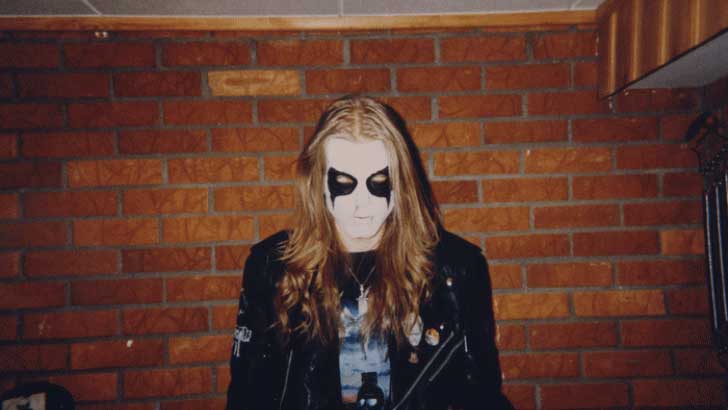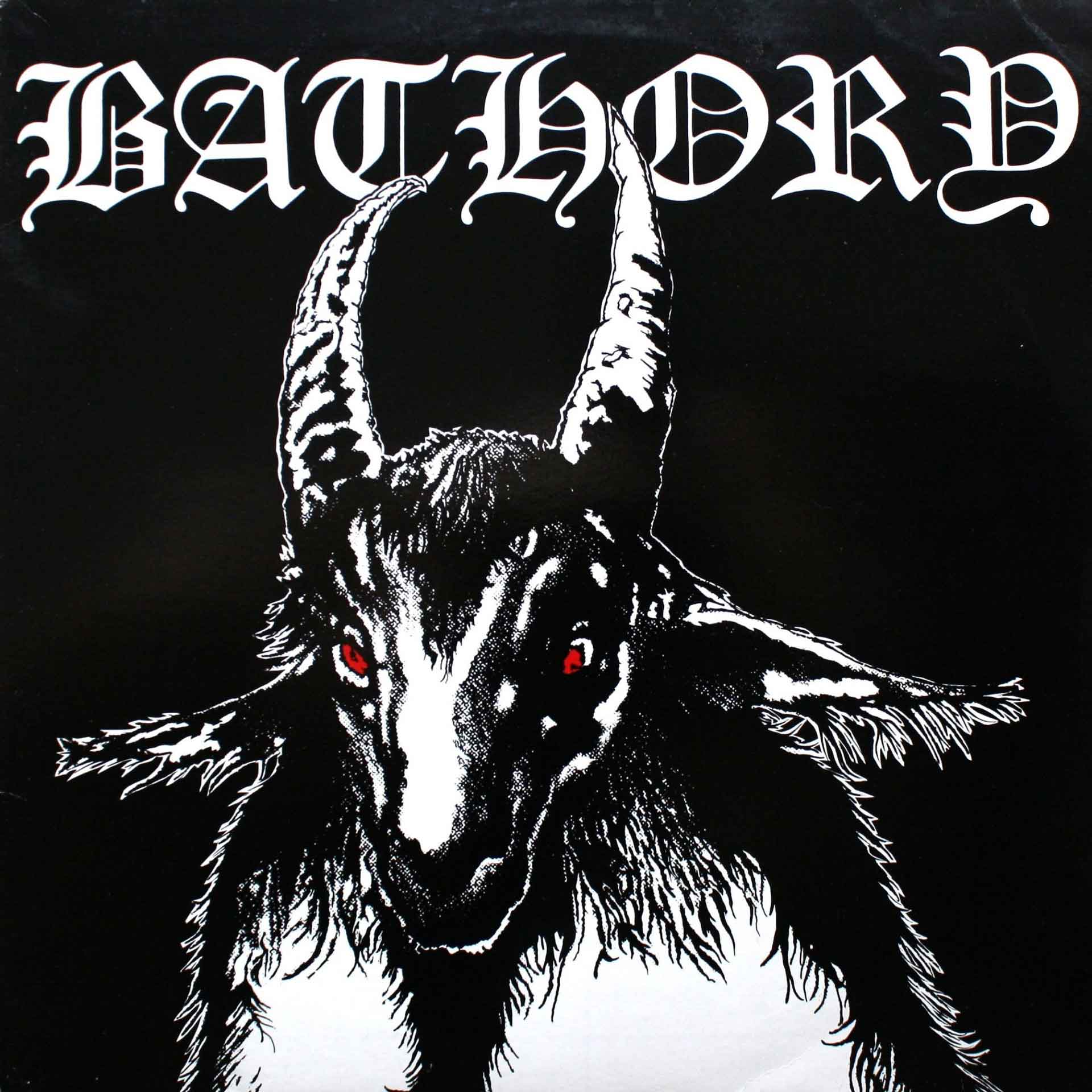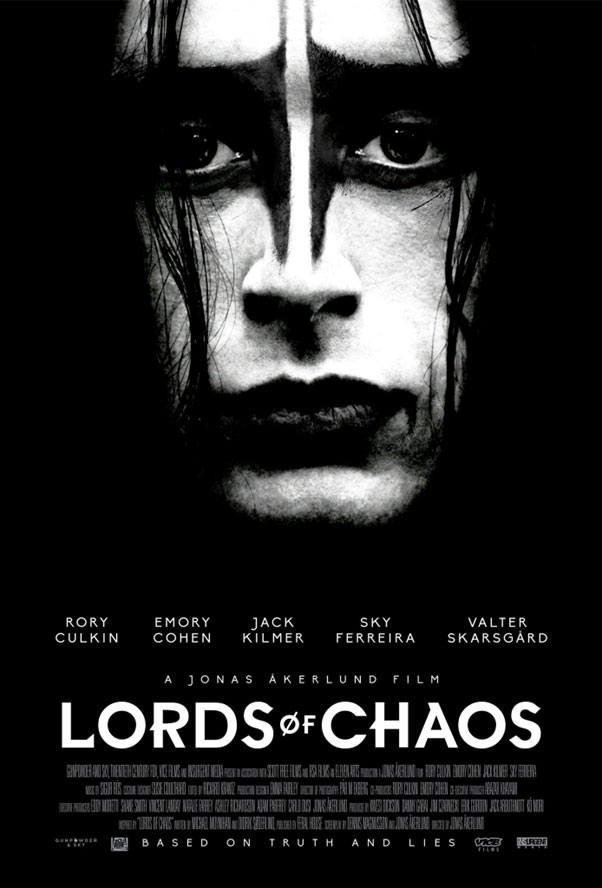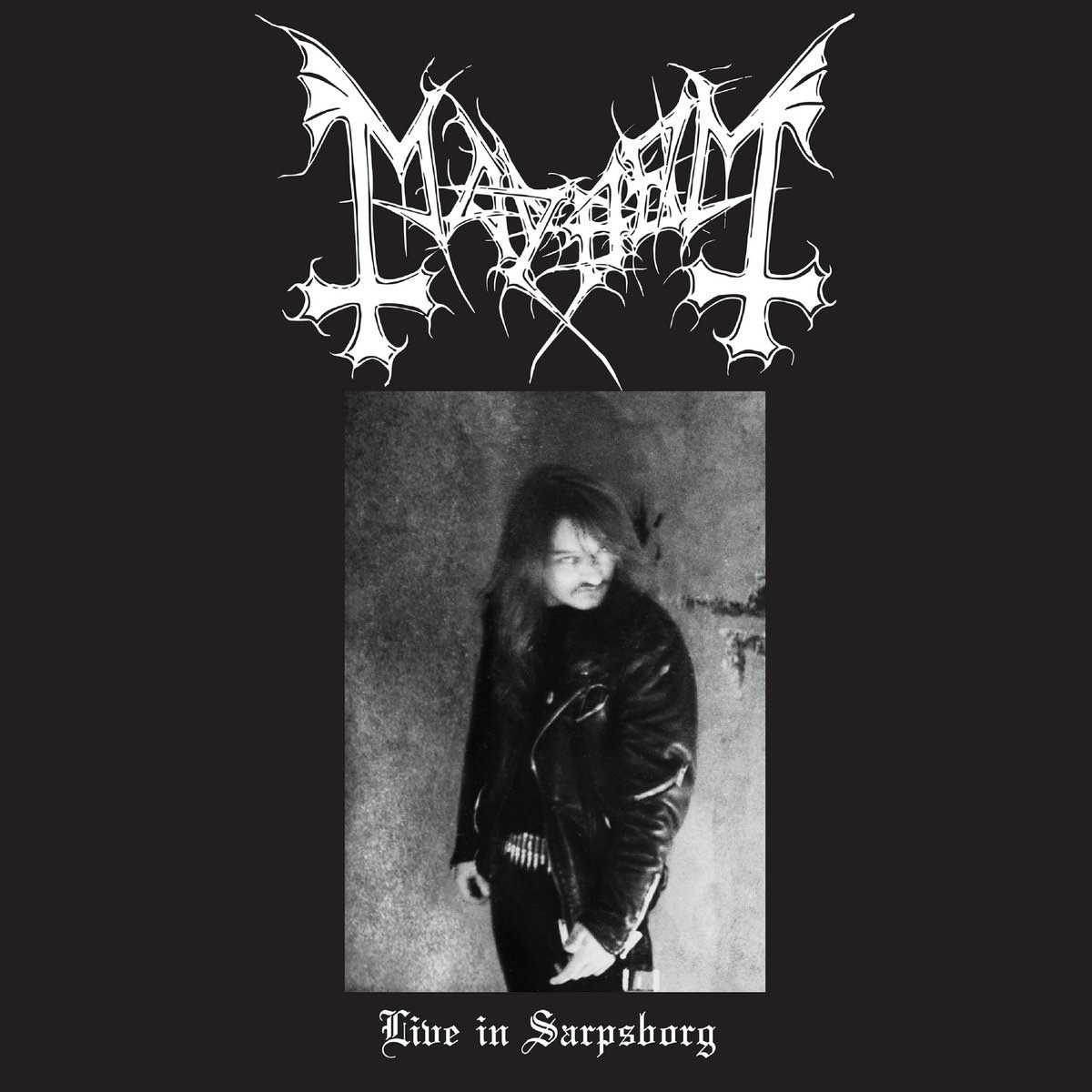The history of extreme music is also the history of extreme album cover designs. Gruesome artwork combining gore and erotica, profane interpretations of religious iconography and even images of human excrements – the creators of metal and related genres, such as grindcore, love to shock their audiences. Probably no one has highlighted taboos as much as the infamous Mayhem album cover – The Dawn of the Black Hearts. It depicts a photo of the body of the band’s singer taken shortly after his suicide.

Content and trigger warning
The following text contains the theme of suicide and self-harm, and discusses the issue of their use in artistic creation and pop culture. Such content is inappropriate for younger audiences – we recommend discretion when reading. It may also trigger anxiety – if you feel you are not ready to be exposed to such content, do not read this article. If you have any suicidal thoughts, seek professional psychological help and support from your loved ones.
Mayhem album cover in a wider context
Before exploring The Dawn of the Black Hearts and the cover of this album, let us set it in a wider context. From today’s perspective, black metal is one of the many sub-genres of metal, distinguished from the rest by its specific sound (heavily distorted guitars, fast drum rhythms and squawking vocals), the themes of the songs (satanism, neo-paganism, misanthropy, depression) and aesthetics (corpse paint, or black and white stage make-up). These, of course, are some simplifications – contemporary black metal is a heterogeneous phenomenon, divided into many sub-genres, full of experimentation with images and music. A number of artists in this field have abandoned the most controversial (the critics would also say the most infantile) elements of its aesthetic – hence there is no shortage of black metal albums that no longer contain a single mention of Satan or occultism.

Black metal controversy
There is no denying, however, that before black metal became a fully-fledged and diverse genre enabling multiple modes of expression, it grew on the soil of controversy. As is usually the case with musical genres, it is extremely difficult to point to a specific album, song or band that started black metal. The early 1980s brought the development of music we now call proto-black metal – distinguished from the rest of the metal scene – not yet by its sound, but by its satanic inspirations. Some trace the origins of black metal to even earlier works – for example, in the recordings of Death SS from 1977, or even those released in 1969 by Cromagnon. However, these were some exceptions ahead of their time rather than the direct inspirations of mature black metal. We can find those in the works of Venom (whose 1982 album was called Black Metal), Celtic Frog, Bathory, or a bit later in KAT – a Polish band. In terms of music, it was still actually heavy/thrash metal. The accompanying musical aesthetics, however, hinted that something new – even more sinister, darker and extreme – was lurking just around the corner.
Mayhem – the birth of Norwegian black metal
In 1983, three Norwegians – Øystein Aarseth (better known by his stage name Euronymous), Kjetil Manheim and Jørn Stubberud – created the group called Mayhem. The group’s name was probably inspired by the title of one of the songs by the aforementioned Venom, namely Mayhem with Mercy. The group began to develop its own style, released its first demos and changed its band members multiple times. As a result of one of them, Per Yngve Ohlin – the Swede, known by his nickname Dead – joined Mayhem in 1988 as a vocalist.

Dead joining the group escalated the band’s image – it became increasingly uncompromising. He is said to be the one to have started the habit of corpse painting in the black metal scene – although this is not clear, as Euronymous is also identified as another pioneer. As the scene rumours hold, before performances, Dead would inhale the stench of a decaying raven kept in a plastic bag. During concerts, he would happen to self-mutilate or throw pig heads into the crowd. It was his image and style of being that contributed to the crystallisation of black metal aesthetics.

The tragic origins of Mayhem’s most famous album cover
Per Yngve Ohlin took his life on 8th April 1991 – after slitting his wrists, he shot himself in the head with a shotgun. It happened in a house near the forest, where the Mayhem musicians rested and rehearsed. The bandmate’s body was found by Euronymous, who – instead of calling the emergency services – left to buy a disposable camera. When he returned, he arranged the knife and shotgun next to the body and then took some photographs of the gruesome scene. What’s more, according to popular legend, Euronymous was to make necklaces from fragments of his friend’s skull, which he gave to artists he respected. The behavior of Euronymous disgusted the bassist of Mayhem, Jørn “Necrobutcher” Stubberud, who decided to leave the band. Ultimately, as cruel as it sounds, the death of Dead has brought enormous publicity to Mayhem as well as the entire black metal scene.
The tragic event was not the culmination of a difficult and weird story of Mayhem, but rather its breaking point. The so-called Black Circle, the community around Helvete (i.e. “hell”), Euronymous’s music shop, later embarked on a campaign of church arson – up to 60 churches were burnt down in Norway in the 1990s as a result of the activities of this community and those inspired by it. On the 10th of August 1993, Euronymous was killed by Varg Vikernes – his former friend and a bassist of Mayhem. The motive for the murder is not clear: it was allegedly in response to threats against Varg, an outcome of a copyright conflict concerning Burzum music, a project by Vikernes, or even an act committed for the sake of publicity. The first studio album by Mayhem was published in 1994, De Mysteriis Dom Sathanas. It features instrumental parts recorded by both the murderer and his victim.

Mayhem album cover – The Dawn of the Black Hearts and breaking taboos
One of the strangest facts about The Dawn of the Black Hearts – except for the gruesome cover, of course – is the fact that it is not even Mayhem’s official album. It is a bootleg released in 1995, thus after the death of Euronymous. The album contains songs recorded during a concert that took place on 28th February 1990 in Sarpsborg. Mauricio Montoya Botero, known as Bull Metal – a Colombian with whom Euronymous corresponded – was responsible for publishing it. This is how the photo of a dead Per Yngve Ohlin reached Bull Metal, and which he decided to use on the cover of the bootleg he released several years later.
The most shocking thing about the photograph used on the bootleg cover is, of course, that it depicts the bloodied body of the person who committed such a dramatic act. Such a view, no matter the context, must evoke emotions – and yet context also matters. Aside from the fact that Euronymous arranged the position of the knife and shotgun, the photo has nothing to do with heavy metal theatricality. There is no archetypal setting, no aestheticisation of death through its suitably dark, gothic circumstances. Instead, the background looks vapidly: it is the panelling of a summer house, and we can also see a couch and a sheet. Ironically, this cliché background makes the photograph affect us more than any other styling – it makes us realise that real tragedies may happen everywhere and have very little to do with the solemnity which art or popular culture often tells us about.
Is Dawn of the black hearts a branding success?
The decision to use the photo of a dead, disfigured man on the cover, moreover, a person who is featured on this album – is very hard to justify on purely artistic grounds. There is no question of any coherent artistic intention here; it is a bootleg, i.e. unofficial and, in fact, a fan edition. And yet it is with this cover that The Dawn of the Black Hearts became one of the most recognisable albums of Mayhem. Was putting this photograph on the cover a cynical exploitation of the tragedy of Per Yngve Ohlin and his family? Certainly – although, of course, we do not know what Dead would say about this. However, we can look at the situation from a different perspective: as a branding success, representing another step in the history of the popularisation of black metal.
Limits of consequences
Today, black metal is, in fact, a harmless phenomenon somewhere between counterculture and pop culture. Even though this scene is trying to explore what is negative, dark, frightening, and sometimes completely non-human, in practice, it rarely shocks anyone anymore. Some black metal artists have stepped into the role of just controversial celebrities who use specific aesthetics to achieve their intended artistic effect. Others separate the music from the style and don’t even attempt any kind of dark image. The elitism and hermeticism of the environment also seem largely yesterday’s news. Nowadays, black metal is a spacious field of musical experimentation, for instance, combining the sound of guitars with electronics or jazz, and black metal artists are happy to perform at festivals for a completely non-black metal audience. Yet, at the root of this scene, we can find burning churches, murders and suicides. The foundation of The Dawn of the Black Hearts – and more broadly of Mayhem and the early scene of Norwegian black metal – is questions on the limits of consequences in artistic, scenic or subcultural self-staging.

The black metal aesthetics
What is related to darkness, and even with evil, is aesthetically clear and challenges the status quo – thus attracting attention. Can one then treat the black metal tendency to break taboos as a mere marketing exercise? Not necessarily – or at least it is not an in-depth explanation. In accordance with the ancient principle of decorum, words and subject matter should go together, and therefore extreme music demands an extreme setting. Earlier, broadly defined heavy metal, however, tended not to ideologise the music – in essence, the participants in this scene were all about having fun, having a particular style and outraging parents. Black metal (especially the second wave, from the late 1980s and early 1990s) is a step further: it is an ideological and aesthetic product of what is most “true” and edgy in metal – which is summarised well in a metal slogan: ‘No mosh. No fun. No core. No friends.’ Joyful blitheness was to give way to absolute seriousness; the proclaimed slogans were to be taken seriously.
Just a music genre or an ideology?
The origins of the Norwegian black metal scene are linked to a fascination with extreme ideologies. Euronymous was attracted to communism – but not as an idea of universal equality, but as a system enabling absolute, totalitarian oppression. Varg Vikernes, to this day, preaches white nationalism and racial segregation. This provokes the question of what came first. Radical beliefs for which the distinct black metal aesthetics has become an attractive medium? Or perhaps the dedication to extreme music, which in the battle for the attention of the audience, led to an “arms race” of ever stronger declarations and, ultimately, acts?
It is difficult to say with certainty when the ideological layer of counter-cultural creativity is just theatre, a wink of the eye, and when it is actually deadly serious. If it is only aesthetics, well – one of the most significant purposes of a broadly defined art is the exploration and testing of opportunities, checking what outrages us, what attracts us, what are the limits and what is behind them. Black metal is – or at least was – a transgressive creation, i.e. the creation that attempts to transcend our social, cultural or psychological boundaries. However, when someone is hurt – physically or emotionally – artistic transgression ceases to be a credible justification.
Mayhem’s album cover – wrapping up
Probably the majority will find the use of a drastic photograph of a person who took their own life on the cover of an album, with no interest in the feelings of the loved ones, ethically questionable, insensitive and distasteful, to say the least. The Mayhem’s album cover, however, was fully in line with the ideological and aesthetic requirements of contemporary black metal – it may still outrage us, but it was nevertheless fully in line with the spirit of black metal of that time, which, after all, wanted to outrage us. The goal, however, we define it – as artistic, ideological, publishing, marketing, branding – has been achieved: the concert bootleg, with its low-quality recordings, has forever made black metal history.

Are you interested in famous album cover designs? You should also read about the legendary banana album cover, Run The Jewels album covers, and meta-design of album covers. Or perhaps you’re just into darkness? Read about the dark academia aesthetic, then.


